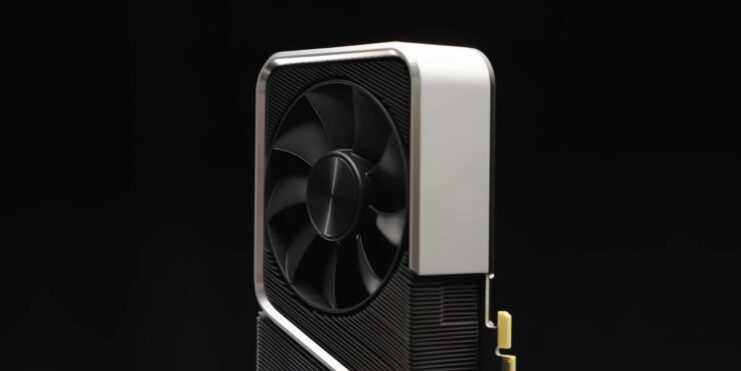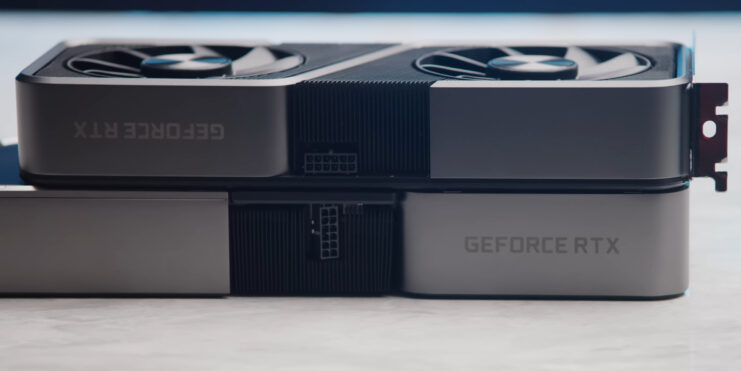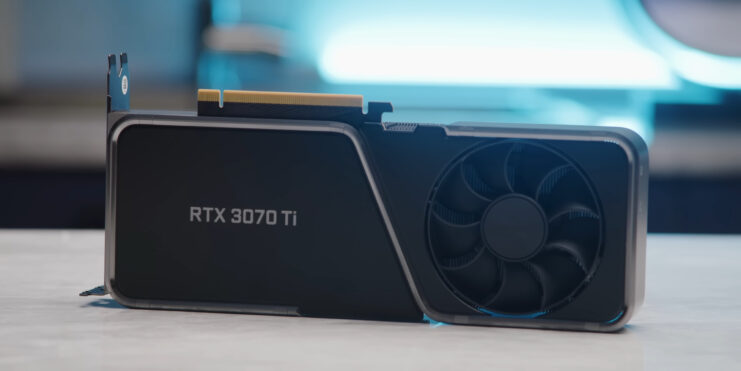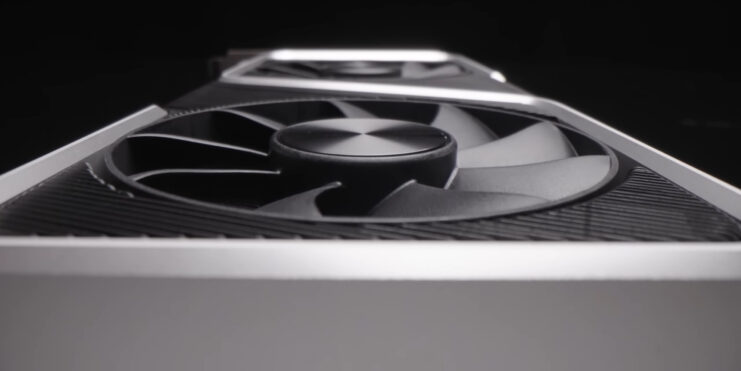The RTX 3060 TI and 3070 are part of NVIDIA’s much-acclaimed RTX 30 series, known for their exceptional performance and innovative features. As GPUs become increasingly integral to various computing needs, from high-end gaming to professional graphic design, understanding the nuances of these two models is essential.
Knowing all the specifics of GPUs is essential since it offers the opportunity for the consumer to have a detailed insight and decide what the best option is. Naturally, conducting research of this sort takes time and patience. Today, we want to talk about these two in greater detail. Without further ado, let us begin.
General Features of Both GPUs
NVIDIA’s RTX 3060 TI and RTX 3070 are not just powerful; they are a testament to modern graphics card technology. Both GPUs share some common features, being part of NVIDIA’s esteemed RTX 30 series.
They are equipped to handle demanding game performance, advanced ray tracing for realistic lighting and reflections, high-quality graphical displays, and even the computationally intensive process of cryptocurrency mining.
These GPUs incorporate NVIDIA’s latest architectural innovations, including improved tensor cores for AI-driven processes and enhanced ray tracing cores for more realistic lighting and shadows. This technological prowess makes them an ideal choice for gamers, designers, and tech enthusiasts seeking top-tier performance.
The inclusion of features like DLSS (Deep Learning Super Sampling) and real-time ray tracing illustrates NVIDIA’s commitment to pushing the boundaries of what modern graphics cards can achieve.
Both cards support a wide range of applications, from the latest AAA gaming titles to professional-grade software used in 3D modeling, video editing, and more. Their ability to handle multiple demanding tasks simultaneously makes them versatile tools for a broad spectrum of users.
NVIDIA RTX 3060 TI

Released on December 2, 2022, the NVIDIA RTX 3060 TI is a powerhouse in its own right. It boasts a fast speed, with a 448GB/s bandwidth and 256-bit memory interface, making it particularly ideal for gamers targeting 1080p and 1440p resolutions.
This positioning makes it a preferred choice for mainstream gamers who want to enjoy high frame rates without compromising on visual quality.
The 3060 TI’s technical specifications include a boost clock of 1665 MHz, which ensures smooth and efficient processing of graphics data. It also features 38 Ray Tracing Cores, which are essential for rendering realistic lighting and shadow effects in games and other applications.
Its 4864 Shader cores are adept at handling a variety of rendering tasks, thereby providing a well-rounded graphical performance.
Additionally, the GPU comes equipped with 152 Tensor Cores, which are vital for AI-related tasks, including NVIDIA’s DLSS technology. This technology leverages AI to upscale images, enhancing visual quality while maintaining high frame rates.
Another significant aspect of the 3060 TI is its thermal design power (TDP) of 200W, which is relatively lower compared to the 3070. This lower TDP translates to less power consumption and potentially lower heat output, making it a more energy-efficient choice for users.
NVIDIA RTX 3070

The NVIDIA RTX 3070, launched on October 29, 2020, is positioned as a higher-tier GPU compared to the 3060 TI, particularly excelling in 1440p gaming. This GPU steps up the performance game, offering an enhanced experience for those seeking more from their graphical hardware.
Key specifications of the 3070 reveal its robust nature: it sports a boost clock of 1725 MHz, slightly higher than the 3060 TI. This increased clock speed contributes to its overall superior performance, especially noticeable in demanding gaming scenarios and high-resolution graphic rendering.
It is especially useful for running modern titles, like those from a legendary Assassin’s Creed franchise.
The GPU is equipped with 46 Ray Tracing Cores, which is crucial for creating more detailed and realistic lighting effects in games and professional 3D applications. This increase in ray tracing cores translates to a significant uplift in rendering complex scenes and lighting effects.
Moreover, the 3070 boasts 5888 Shader cores, which are essential for general graphics processing tasks. This higher number of shader cores compared to the 3060 TI means that the 3070 can handle more parallel processing tasks, improving performance in games and other graphics-intensive applications.
Furthermore, with 184 Tensor Cores, the 3070 is well-equipped for AI-driven processes, including advanced image upscaling techniques like DLSS, which enhance performance without sacrificing visual fidelity.
An important consideration for the 3070 is its thermal design power (TDP) of 220W. While this is higher than the 3060 TI, it is indicative of the card’s increased performance capabilities. Users opting for the 3070 should ensure their system’s cooling and power supply are adequate to handle this increased power requirement.
Performance Comparison
When comparing the gaming performance of the RTX 3060 TI and the RTX 3070, several factors come into play. The 3070, with its superior specifications, generally outperforms the 3060 TI in gaming scenarios, with performance differences ranging from 10% to 18% depending on the game.
This difference is particularly noticeable in graphically demanding titles and at higher resolutions.
The 3070’s edge in performance can be attributed to its higher number of ray tracing and shader cores, which allows it to handle more complex scenes and effects with greater efficiency. Additionally, its higher boost clock means it can process graphics data faster, contributing to smoother frame rates and better overall gaming experience.
This makes the 3070 a more suitable choice for gamers who prioritize high-resolution gaming at 1440p, and even for some entry-level 4K gaming scenarios.
In terms of resolution capabilities, while both cards perform admirably at 1080p and 1440p, the 3070 offers a more consistent and higher frame rate at 1440p. This makes it a more future-proof option for gamers looking to upgrade their displays or for those who already own a high-resolution monitor.
The impact of TDP on performance and energy consumption is another crucial aspect. The lower TDP of the 3060 TI makes it a more energy-efficient choice, which can be a deciding factor for users concerned about power consumption and heat generation. For those prioritizing performance, the higher TDP of the 3070 is a trade-off for its enhanced capabilities.
Market Considerations

The market dynamics for both the NVIDIA RTX 3060 TI and the RTX 3070 are influenced by several factors, including stock availability and pricing. Both cards have been affected by stock issues since their release, a common challenge in the high-demand GPU market.
This scarcity often leads to prices being inflated above the manufacturer’s suggested retail price, affecting affordability and accessibility for many consumers.
The RTX 3060 TI, released later in December 2022, entered a market already facing supply constraints. Its positioning as a more budget-friendly option compared to the 3070 makes it highly sought after, particularly among mainstream gamers and those looking for a balance between cost and performance.
The stock issues mean that potential buyers may face challenges finding this GPU at its intended price point.
On the other hand, the RTX 3070, despite being older, continues to face similar stock challenges. Its superior performance makes it a desirable choice for enthusiasts and gamers who seek higher-end capabilities. The demand for this GPU, coupled with supply shortages, also leads to elevated prices in the market. At the moment, price is at around $500.
These market conditions emphasize the importance of timing and research when purchasing a GPU. Potential buyers need to be aware of the current market trends, price fluctuations, and availability issues.
It’s also worth considering the future-proofing aspect, as investing in a more powerful GPU like the RTX 3070 might offer longer-term value despite a higher initial cost.
FAQs
Should I upgrade 3060 Ti to 3070?
If you’re seeking significantly better performance, particularly at 1440p resolution or in more graphically demanding games, upgrading from a 3060 Ti to a 3070 can be beneficial.
Is RTX 3070 a lot better than 3060?
The RTX 3070 does offer better performance than the 3060 Ti, especially in terms of higher frame rates at 1440p resolution and better handling of ray tracing. The performance boost is noticeable but may not be “a lot” unless you’re pushing the limits of the 3060 Ti.
Is 3060 Ti worth it in 2024?
Yes, the 3060 Ti remains a valuable choice in 2024, particularly for gamers focusing on 1080p and 1440p resolutions. It offers a good balance of performance and energy efficiency at a relatively more affordable price point.
What CPU pairs well with 3060 Ti?
A mid to high-range CPU like AMD Ryzen 5 5600X or Intel Core i5-10600K pairs well with the 3060 Ti. These CPUs, due to their capabilities, offer sufficient performance to prevent bottlenecks and complement the GPU in balanced gaming setups.
Summary
Both options offer impressive capabilities, but they cater to slightly different user needs and preferences. The 3060 TI, with its lower TDP, more affordable pricing, and excellent performance at 1080p and 1440p resolutions, is an ideal choice for mainstream gamers and those looking for a balance between performance and power efficiency.
The RTX 3070, on the other hand, stands out for users who prioritize higher performance, particularly at 1440p resolution. Its superior ray tracing and shader cores, along with a higher boost clock, make it well-suited for more demanding gaming scenarios and future-proofing for upcoming game titles.
Ultimately, the choice between the RTX 3060 TI and the RTX 3070 should be guided by individual requirements, budget constraints, and performance expectations.

